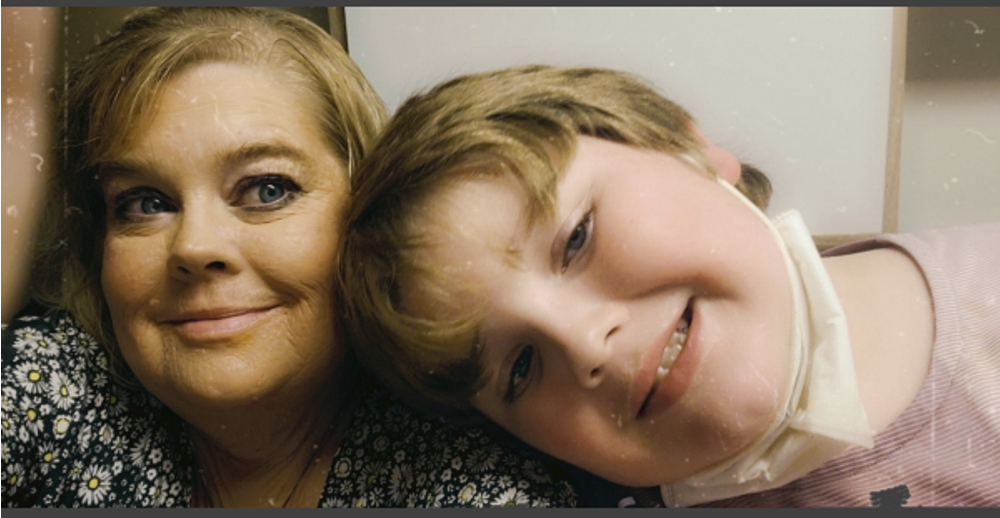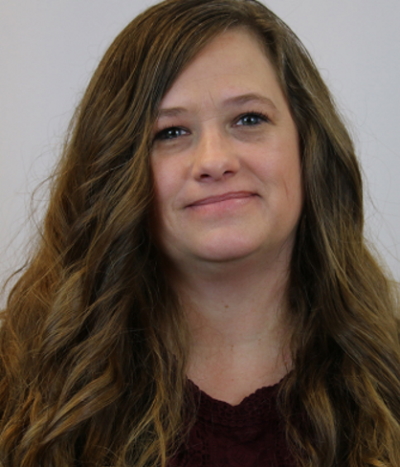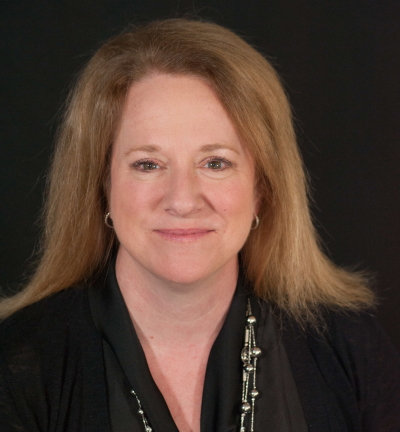
Family Photo
Heather McFann, a nurse and single mother, was one of the families who asked state legislators to allow providers be paid for in-home services during the remote school day. Hunter, her 11-year-old son (right), has autism.
When the COVID-19 pandemic hit last year, Wichita, Kansas, nurse Heather McFann was at a loss as to what to do for her 11-year-old son, Hunter, who has autism.
Not only had Hunter’s school closed due to COVID, but the disability service center where he went after school also had to close. It wasn’t safe to have kids with special needs gathering in one place.
But for McFann, a single mother with an hourlong commute, it also wasn’t safe to leave Hunter home by himself. She felt as though she had to choose between her job and her child.
“It was like pure panic,” McFann said, adding that hiring someone to look after Hunter every day would be prohibitively expensive, “because he has the autism label.”

Families all over America were feeling the same stress, as disability service providers were forced to close their congregate services.
That not only left families in the lurch but left the providers, who generally work on very slim margins anyway, out significant revenue.
“Things were really pretty dire for many of our members through the early months of the pandemic,” said Donna Martin, the director of state partnerships and special projects for ANCOR, a trade group that represents organizations that provide services to people with intellectual and developmental disabilities.
Some organizations, like the one in Wichita that serves McFann’s son, Rainbows United, were able to pivot and find new creative ways to deliver services during the pandemic, but only after their state governments allowed flexibility on regulations governing who was eligible for services in certain settings..
Others were never able to recover, and the loss of programs (and in some cases entire service provider organizations) may have detrimental effects on the development of children with disabilities long after the pandemic is over.
Getting creative
When the pandemic hit, two of the three Rainbows United programs that Lynlea Southards ran had to shut down.

Lynlea Southards
Southards was in charge of in-home support services for kids with disabilities, after-school and weekend programs at the Rainbows United center in Wichita. Camp Woodchuck, a summer day program, also held at the center.
Only the in-home services were allowed to continue. Southards said she and the other staff immediately began thinking about how to continue providing services without having kids at the center. They never seriously considered just shutting down the programs until the pandemic was over.
The youth who Rainbows serves have a wide range of needs. The organization’s direct care workers help with everything from tube feedings and diaper changes to life skills like money management.
“Our families need services so badly and for them to not have that, I just didn’t feel like it was an option,” Southards said. “It was just how are we going to provide it? What changes do we need to make to provide it? Because for them to lose school was huge. A lot of the kids that we serve, that structure is pretty vital, so for them to lose us and the school, I just felt like that would be too much for them.”
Southards began contacting all the staff members who usually worked at the center to gauge their interest in providing in-home services. Then she reached out to the families who usually sent their kids to the center to gauge their interest in having Rainbows workers come to their homes instead.
Some declined, fearing that even that amount of contact might expose their vulnerable child to COVID-19. But many were interested.
“It was really great to see that a lot of our families wanted that,” Southards said. “That was a huge transition, a big change, but it went pretty smoothly.”
The goal was to pair specific workers with specific families to both reduce the possibility of transmitting illness and to allow workers to form close relationships with the kids they served. That required the organization to hire more direct service workers.
Rainbows also had to seek permission from the state to get reimbursements for providing in-home services for kids during their remote schooling.
Organizations like Rainbows United are paid almost entirely through state Medicaid programs, and those programs often don’t cover support services during the school day because public school districts are supposed to provide those in order to ensure equal access to education for kids with disabilities.
But the pandemic brought lawsuits from parents who said districts were falling short on that obligation when it came to remote learning. In Kansas, a concerted lobbying effort by parents and disability service providers led legislators to allow the providers to be paid for in-home services during the remote school day.
“For the state to change it and make an exception for us to provide during the day was huge for a lot of our families,” Southards said. “Because they can’t just have anyone come in. A lot of these kids have some severe needs in some cases.”
McFann was among the parents who contacted their legislators to make the change. Rainbows workers who her son knew from the center began coming to the house eight or nine hours a day, helping Hunter with remote school and taking care of him while she was at work.
When the summer began, Rainbows pivoted its usual programming again, moving all the Camp Woodchuck activities online. Staffer brought camp materials to the participants’ homes and helped during the day.
McFann said her son is now back in school, but he’s still receiving day in-home services after school. A Rainbows worker meets him at the bus stop and stays with him until she gets home from work. Meanwhile, she has taken a new job, closer to home, with the county health department, performing COVID-19 tests and administering COVID-19 vaccines — a job she can only do because of the in-home services Hunter receives.
“It has been a huge relief,” McFann said, “and I am truly forever grateful that they have stepped in and helped as much as they have.”
National struggle continues
Not every family has been that fortunate. When ANCOR surveyed its approximately 1,600 disability service providers about the pandemic’s effects in April 2020, about 68% of those who responded said they had to discontinue at least one of their programs. That meant an average cost of 32% of annual revenue, Martin said.

Donna Martin
In a follow-up survey in July, the number who had to close at least one of their service lines had risen to 77%. Of those, 16% said they did not anticipate being able to reopen the programs, even after the pandemic.
“In some cases that reflected an entire organization” closing, Martin said. “There were a few that provided day support services that are gone. They just closed. Others may still be operating, but reported that at least one of their lines of service they closed was not going to reopen. … this has had a long-term impact on a percentage of our members.”
Disability service providers were able to access some emergency funds from the first federal coronavirus stimulus bill, but not until months after it passed in March 2020. And that was only a one-time infusion of funds, not reliable cash flow.
The stimulus bill passed in March 2021 included ongoing financial support for disability service providers, but Martin said it is still impossible to discern how long it will take to restore the capacity to support disabled people that has been lost so far.
“I think that’s kind of hard to gauge and I think it varies geographically,” she said. “For some of these organizations that have shut down or closed certain programs, if they are in a rural area, I think it will be more difficult for the people who have now lost services to find a new provider.”
Even if programs do restart, the “revolving door” of caregivers can be difficult for kids with disabilities, Martin said.
That’s why it’s more critical than ever for states to try to retain the disability service programs that have so far survived the pandemic, she said, whether that’s through higher payments, or help recruiting and training caregivers.
“Anything a state can do to sort of bolster capacity among its existing providers,” Martin said, “whether it’s through rate enhancements or other resources that can help them expand their scope of services, I think is helpful.”



























